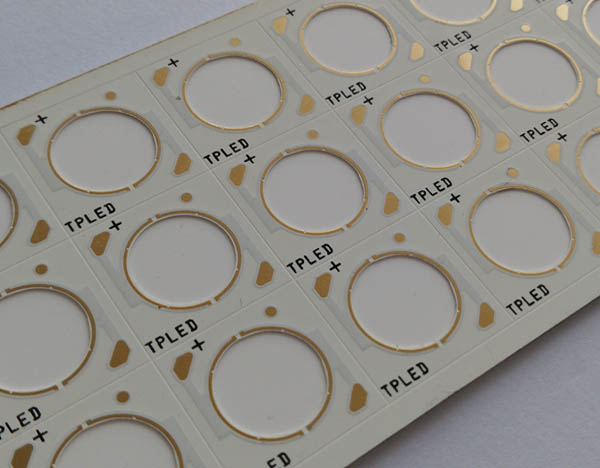Ceramic PCBs, Also known as ceramic printed circuit boards
Ceramic PCBs, also known as ceramic printed circuit boards, offer several advantages
over traditional PCB materials such as FR4 (fiberglass-reinforced epoxy). These advantages
make ceramic PCBs a preferred choice for various applications, especially in industries where
high-performance and reliability are critical. In this essay, we will explore the advantages of
ceramic PCBs in detail.
One of the primary advantages of ceramic PCBs is their excellent thermal conductivity. Ceramic
materials, such as aluminum oxide (Al2O3) and aluminum nitride (AlN), have significantly higher
thermal conductivity compared to FR4. This property allows ceramic PCBs to efficiently dissipate
heat generated by electronic components, preventing overheating and ensuring optimal performance
and reliability. The high thermal conductivity of ceramic PCBs also enables the use of smaller and
more compact designs, as heat can be effectively transferred away from critical components.
The superior thermal conductivity of ceramic PCBs is particularly beneficial for applications that
involve high-power components or those operating in harsh environments. For example, in power
electronics, such as inverters or motor drives, ceramic PCBs can handle higher power densities
without compromising performance or reliability. Similarly, in automotive or aerospace applications,
where electronic components are subjected to extreme temperatures and vibration, ceramic PCBs
provide enhanced thermal management, reducing the risk of component failure.
Another advantage of ceramic PCBs is their excellent electrical insulation properties. Ceramic materials
have high dielectric strength, which means they can withstand high voltages without electrical breakdown.
This property is crucial in applications that require high voltage or high-frequency operation, such as power
electronics, RF/microwave circuits, or telecommunications equipment. Ceramic PCBs can maintain their
electrical integrity even under demanding conditions, ensuring reliable and stable operation.
Furthermore, ceramic PCBs exhibit low dielectric loss, which means they have minimal energy dissipation
in the form of heat when subjected to an electric field. This property is particularly important in high-frequency
applications, where energy losses can significantly impact the overall performance. By minimizing dielectric loss,
ceramic PCBs enable efficient signal transmission and reduce the risk of signal degradation or distortion.
In addition to their excellent thermal and electrical properties, ceramic PCBs offer superior mechanical
strength and stability. Ceramic materials have high hardness and rigidity, making them resistant to
mechanical stress, vibration, and bending. This property is advantageous in applications that involve
harsh environments or require high reliability, such as automotive, aerospace, or industrial equipment.
Ceramic PCBs can withstand physical stresses without compromising the integrity of the circuit, ensuring long-term performance.
Moreover, ceramic PCBs exhibit excellent dimensional stability, meaning they have minimal expansion or contraction when exposed to temperature variations. This property is crucial for applications that require precise alignment of components or tight tolerances. Unlike organic materials, such as FR4, which can expand or contract with temperature changes, ceramic PCBs maintain their shape and dimensions, providing consistent performance over a wide temperature range.

Another advantage of ceramic PCBs is their compatibility with high-temperature processes.
Ceramic materials can withstand higher temperatures during manufacturing processes, such
as soldering or reflow, compared to organic materials. This allows for the use of lead-free
soldering techniques, which are essential for meeting environmental regulations. Additionally,
ceramic PCBs can withstand higher operating temperatures, enabling their use in applications
that require elevated temperature operation or are exposed to heat sources.
Furthermore, ceramic PCBs offer excellent chemical resistance, making them suitable for
applications that involve exposure to corrosive substances or harsh chemicals. Ceramic
materials are inert and do not react with most chemicals, ensuring the long-term reliability
and performance of the PCB. This property is particularly beneficial in industries such as
chemical processing, oil and gas, or medical equipment, where the PCB may come into
contact with aggressive substances.
In conclusion, ceramic PCBs offer several advantages over traditional PCB materials,
making them a preferred choice for high-performance and reliable applications. The
excellent thermal conductivity, electrical insulation properties, mechanical strength,
dimensional stability, high-temperature compatibility, and chemical resistance of ceramic
PCBs contribute to their superior performance and reliability. These advantages make
ceramic PCBs suitable for a wide range of industries, including power electronics,
automotive, aerospace, telecommunications, and many more.
Other PCB products, you may interesting









